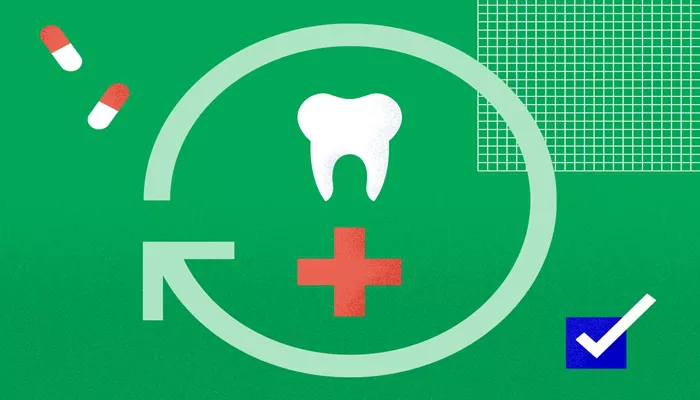Dental health is an important aspect of overall well – being. In the United States, the availability and prevalence of dental insurance play a significant role in determining access to dental care. Dental insurance in the US has a complex landscape that is influenced by various factors.
Market Penetration of Dental Insurance
General Prevalence
Dental insurance is relatively common in the United States. A significant portion of the population has some form of dental insurance coverage. Many employers offer dental insurance as part of their employee benefits packages. This is a major source of dental insurance for working – age adults. For example, large corporations often provide comprehensive dental insurance plans that cover a wide range of services from preventive care like cleanings and check – ups to more complex procedures such as root canals and crowns. These employer – sponsored plans are designed to attract and retain employees.
Government – Sponsored Programs
In addition to employer – sponsored plans, there are government – sponsored dental insurance programs. Medicaid, for instance, provides dental coverage for low – income individuals and families. However, the scope of dental services covered under Medicaid can vary from state to state. Some states may offer more comprehensive dental coverage, while others may have more limited benefits. Medicare, on the other hand, generally has limited dental coverage, mainly focusing on certain medically – necessary dental procedures in specific cases. These government – sponsored programs contribute to the overall prevalence of dental insurance, especially among vulnerable populations.
Reasons for the Commonality of Dental Insurance
Importance of Dental Health
The high value placed on dental health in the US is one reason for the commonality of dental insurance. Americans are generally aware of the importance of maintaining good oral hygiene and preventing dental diseases. Dental insurance helps individuals afford the cost of regular dental check – ups, cleanings, and preventive treatments. By having insurance, people are more likely to seek timely dental care, which can prevent more serious and costly dental problems in the future. For example, preventive care such as fluoride treatments and sealants can be covered by dental insurance, reducing the risk of cavities and more complex restorative procedures.
Cost of Dental Care
Dental care can be expensive in the United States. Procedures such as orthodontics, dental implants, and complex restorative dentistry can cost thousands of dollars. Dental insurance helps to offset these costs. It provides a financial safety net for individuals and families, making dental care more affordable. Without insurance, many people may not be able to afford necessary dental treatments. For instance, a single – tooth dental implant can cost several thousand dollars, and insurance can cover a portion of this cost, depending on the plan.
Industry Influence
The dental insurance industry itself has also contributed to the commonality of dental insurance. Insurance companies have actively marketed their dental insurance products to employers and individuals. They have developed a variety of plans with different levels of coverage and premiums to appeal to different market segments. For example, some plans may offer a basic level of coverage with a lower premium for those who mainly need preventive care, while others may have more comprehensive coverage for individuals who anticipate more complex dental procedures.
Variations in Dental Insurance Coverage
Plan Types
There are different types of dental insurance plans in the United States. Indemnity plans give patients more freedom to choose their dentists but may require more out – of – pocket costs. Preferred Provider Organization (PPO) plans have a network of dentists, and patients usually pay less if they choose a dentist within the network. Dental Health Maintenance Organization (DHMO) plans often have lower premiums but limit patients to a specific network of dentists and may have more restrictions on the choice of treatments. These different plan types are available to meet the diverse needs of the population, which also reflects the complexity and commonality of dental insurance in the US.
Coverage Limitations
Despite the commonality of dental insurance, there are often limitations to the coverage. Most dental insurance plans have annual maximums, which limit the total amount of dental care that the insurance will cover in a year. For example, an annual maximum may be set at $1,500 or $2,000. Once this limit is reached, the patient is responsible for all additional dental costs for the year. Additionally, some plans may have waiting periods before certain types of procedures are covered. For instance, there may be a six – month waiting period for orthodontic treatment.
Impact on Dental Care Utilization
Preventive Care
The presence of dental insurance has a positive impact on the utilization of preventive care. People with dental insurance are more likely to visit the dentist regularly for cleanings and check – ups. This helps in the early detection and prevention of dental diseases. For example, studies have shown that individuals with dental insurance are more likely to receive fluoride treatments and have their teeth professionally cleaned at least twice a year compared to those without insurance.
Restorative and Specialized Care
Dental insurance also affects the use of restorative and specialized dental care. While the coverage limitations and cost – sharing requirements can be a deterrent for some patients, having insurance still makes these procedures more accessible. For instance, a patient with dental insurance may be more likely to undergo a root canal treatment or get orthodontic treatment for their children compared to someone without insurance.
Conclusion
In conclusion, dental insurance is common in the United States due to a combination of factors such as employer – sponsored benefits, government – sponsored programs, the importance of dental health, the high cost of dental care, and the influence of the insurance industry. However, the variations in coverage and limitations also pose challenges for patients in accessing comprehensive dental care. Understanding the nature of dental insurance is crucial for individuals to make informed decisions about their dental health and financial well – being.
Related topics:

